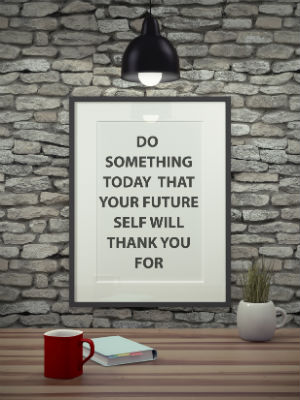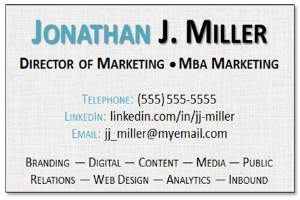Despite the changing job-search environment, thank you letters after the interview is still an important step. Whether a prescreening phone interview or a first or second in-person interview, a thank you letter is a great way for reinforcing your interest in the position.
In this post, we’ll show you how to best approach to sending a thank you email, letter, or a handwritten thank-you note.
Let’s get started by answering some of the most common questions we’re asked about thank you letters.
 For example, do you always need to send one?
For example, do you always need to send one?
Ideally, yes.
Though, you don’t need to write some elaborate thank you to each interviewer.
Sometimes, a short and sweet thanks work best.
In short, you’ll express gratitude, sign your name, and you’re done.
Will you not get offered the job if you don’t send one?
Yeah, this is simply not true.
It’s hokum to believe that you’ll get rejected because you didn’t send a thank you letter.
In fact, there are some HR managers and recruiters who secretly hate thank you letters because they’re just one more thing that must be dealt with.
You shouldn’t let this discourage you from writing a letter of thanks, however.
What letter format is best?
We’ve seen formal letters that follow proper business etiquette. For example, these letters are handwritten (or typed) on stationary with a date, contact info, salutation, subject line, letter body, and a signature.
Companies that you might consider “old school” may appreciate the additional time you put into this format.
A formal letter is a fine method, although there are some rules for the interview follow-up.
![Downloadable Ebook / Best Practices For Writing Thank You Letters & Notes [DOWNLOAD] Includes Example Content](https://www.resumetoreferral.com/wp-content/uploads/book-cover-thank-you-letters-233x300-1.png) Would you like more sample content to write “rock solid” thank you letters?
Would you like more sample content to write “rock solid” thank you letters?
If yes, be sure to check out our downloadable resource, “Don’t Forget to Kiss The Toes,” which gives advanced tips for writing and how to get the most benefit from your thank you letters.
It’s a great go-to resource for those who struggle with knowing what and how to write.
Learn more about this download here.
For example, a formal letter needs opening, middle, and closing paragraphs.
An opening paragraph generally includes the basics:
“Thank you for taking the time to meet with me for the HR Manager position at your Columbus, Ohio, location. I appreciated the virtual tour of your facility, along with the Skype time spent with your Facility Manager.”
Simple enough, right?
With the middle, you can reinforce your skills, much the same way you wrote your cover letter. In fact, if you’re lucky, you could recycle 1-3 sentences from your cover letter. But, do a bit of customization just in case the hiring manager compares the two documents.
An example body section/paragraph might look like this:
“As I mentioned during the job interview, I have performed an array of marketing and business development tasks. Many that are outlined in your job description. For example, my current role has me coordinating the scheduling and planning of social media, network marketing, and donor relations campaigns that promote strong press coverage and attract donations to a high-profile client, Dress For Success. My role has allowed me to initiate and build relationships with many large employers, such as Kettering Health Network, LexisNexis, and Wright-Patterson AFB.”
Closing your thank you letter is the easiest as you’ll focus on some common phrasing:
“Let’s schedule some time to chat again …”
“I’d love to answer any follow-up questions you have. You can reach me at…”
“Please don’t hesitate to contact me should you have …”
“Thank you for your time.”
If you struggle with writing, a letter might not be the best format for you.
We’ve also seen 3″x5″ thank you cards, which are quick handwritten notes that are mailed by snail mail (AKA the USPS). 🙂
As you’re aware, thank you stationery is inexpensive. In fact, you can purchase a small pack of professional, elegant cards for less than $10. Even less at your local Wal-Mart or discount store.
If you seek a more personal approach, a new tactic is to purchase monogrammed thank you stationery from online printers such as VistaPrint.com.
Personalized thank you cards can also be purchased through Shutterfly.com, TinyPrints.com, and Snapfish.com.
You have a lot of design benefits with this option.
For example, imagine your return address nicely printed on the card envelope and a monogram or unique design on the front of the card.
You could also mimic the header from your resume onto the thank you card. This way, ALL your job-search marketing material looks related.
 A nice unique addition to a thank you card is to tuck a business card into the envelope before sealing.
A nice unique addition to a thank you card is to tuck a business card into the envelope before sealing.
One of the most recent thank you letter formats is email and instant messaging (IM).
Much like the content written for a thank you card, thanks sent by email and IM are also kept brief.
Example Content for Email/IM Thank You
“Thank you for interviewing me on Monday. After speaking with you, and meeting with Mr. McDonald, I was further reassured that Solidad Pharmaceuticals is a fantastic employer. I’d be honored to join your team as a Pharmaceutical Sales Rep for the Northeastern Ohio region. If you have any questions, call me at (513) XXX-XXXX. Regards, Jim”
Example Content For Handwritten Note
“Thank you for extending your Thursday lunch to meet with and interview me, Sandy. As we discussed, I’m looking to take my B2B SaaS selling experience to a growing company that’s looking to expand market share throughout the Midwest. I hope after we talked that you felt I was the ideal candidate for expanding your company into the Ohio, Indiana, and Kentucky markets. In fact, could we schedule a follow-up meeting for early next week? I can answer any follow-up questions you might have. And, I will be happy to outline my 90-day, 6-month, and 12-month strategy to you. Sound good? Thanks again, Amber”
One of the best benefits of writing thank you letters is you get the opportunity to shore up skills you want to be reinforced. Skills that you unique to you and might not be dominant in other candidates.
For example, let’s say you’ve done marketing to the SE Asian market. Skills that the employer wants/needs desperately.
Skills like these would be perfect to reinforce in a well-written thank you letter.
A thank you letter is also a great time to mention something new (positive) that you learned about the company.
For example, maybe the company just announced a big contract or a new plant opening.
“I noticed in this morning’s Dayton Business Journal that your company landed a multimillion-dollar contract with Wright-Patterson AFB. Congrats! If you noticed, I was the Project Manager for a government contract between Ohio Electric and WPAFB in 2017. My involvement enabled me to work with engineers, project planners, and project accountants.”
See what I did there?
I just made my client much more relevant and marketable by being relevant to the employer’s current needs.
This is why thank you letters can be so powerful.
These letters give you one last chance to plead your case to secure a second interview, or better yet, a job offer.